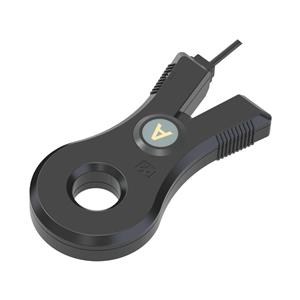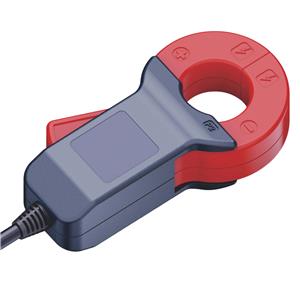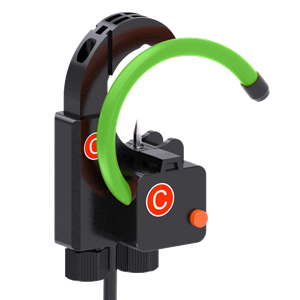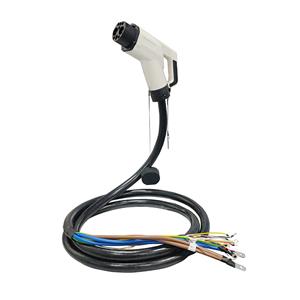The Intelligent Evolution of Current Transformers
The Intelligent Evolution of Current Transformers: Features, Industry Impact, and Future Trends
Introduction
As power systems worldwide transition toward smart grids, the demand for intelligent current transformers (CTs)—devices that combine traditional current measurement with advanced digital capabilities—is surging. Unlike conventional CTs, which merely convert high currents to standardized low currents for measurement, intelligent CTs integrate self-diagnostic, adaptive, and remote communication functions. These features enable real-time data collection, predictive maintenance, and seamless integration with smart grid platforms, addressing critical challenges in modern electricity distribution. A prime example is the DCT105W-B3 120A CT with DC immunity, a device designed to meet the demands of mixed AC/DC environments (e.g., renewable energy integration, industrial DC drives). This article explores the intelligent characteristics of the DCT105W-B3, the industry-wide transformation driven by CT intelligentization, and future trends in AI and big data integration.
Intelligent Features of the DCT105W-B3 120A CT
The DCT105W-B3 exemplifies how traditional CTs are evolving into "smart sensors" for modern power systems. Its core intelligent features include:
1. Self-Diagnostic Capabilities
The DCT105W-B3 is equipped with internal sensors that monitor key parameters such as coil temperature, insulation resistance, and secondary-side output stability. In real time, it evaluates these metrics against predefined thresholds to detect anomalies (e.g., magnetic core saturation, insulation aging, or loose connections). If an issue is identified, the CT triggers a local alarm or sends a remote warning to the utility’s management system, enabling proactive maintenance. For example, if the secondary-side current deviates from the rated value by more than 10%, the CT automatically alerts operators to potential faults, reducing the risk of catastrophic failures.
2. Adaptive Regulation for Dynamic Environments
Unlike conventional CTs with fixed turn ratios, the DCT105W-B3 uses dynamic adjustment algorithms to optimize performance in variable-load conditions. For instance, when feeding renewable energy sources (e.g., solar PV systems) or electric vehicle (EV) charging stations—where current flows can fluctuate rapidly—the CT adjusts its amplification factor and filtering parameters to maintain high measurement accuracy (±0.5% typical) across a wide dynamic range (from milliamps to 120A). This adaptability ensures reliable performance in both low-current (e.g., residential loads) and high-current (e.g., industrial machinery) scenarios.
3. Remote Communication & IoT Integration
The DCT105W-B3 supports standardized communication protocols such as Modbus RTU and HART, enabling seamless integration with smart grid platforms and cloud-based energy management systems. It transmits real-time data—including current magnitude, device status, and diagnostic alerts—to centralized systems via wired (Ethernet) or wireless (LoRa, NB-IoT) connections. This connectivity allows utilities to monitor CT performance remotely, reducing the need for manual site visits and enabling centralized control of distributed assets. For example, a utility can use the DCT105W-B3’s data to optimize load distribution across a neighborhood, preventing overloads during peak demand.
Impact on the Current Transformer Industry
The intelligentization of CTs like the DCT105W-B3 is reshaping the power equipment industry in three key ways:
1. Shift from Reactive to Predictive Maintenance
Traditional CT maintenance relies on periodic manual inspections, which are time-consuming and often fail to detect early-stage faults. Intelligent CTs, with their self-diagnostic and remote monitoring capabilities, enable predictive maintenance—a model where data from the CT is analyzed to predict potential failures before they occur. For example, by tracking temperature trends over time, utilities can identify CTs at risk of overheating and schedule maintenance proactively. This approach reduces unplanned outages by up to 50% and lowers maintenance costs by 30% compared to traditional methods.
2. Enhanced Grid Reliability & Efficiency
Intelligent CTs improve grid reliability by providing real-time insights into current flows and equipment health. For instance, in a smart grid, the DCT105W-B3 can detect a short circuit or ground fault within milliseconds and send an alert to the utility’s control center. This enables faster tripping of protective devices, minimizing outage duration and damage to equipment. Additionally, by integrating with demand response systems, intelligent CTs help utilities balance load during peak periods—for example, by adjusting the output of EV charging stations to reduce strain on the grid.
3. Standardization & Ecosystem Synergy
The widespread adoption of intelligent CTs is driving standardization in communication protocols and data formats. For example, the IEC 61850 standard—an international protocol for smart grid communication—ensures that intelligent CTs from different manufacturers can seamlessly integrate with utility systems. This standardization fosters ecosystem synergy, allowing utilities to combine data from intelligent CTs with other smart devices (e.g., smart meters, sensors) to create a holistic view of the power grid. Such integration is critical for enabling advanced grid functions like self-healing (automatically isolating faults) and distributed energy resource (DER) management.
Future Trends: AI & Big Data Integration
The future of intelligent CTs lies in the integration of artificial intelligence (AI) and big data analytics, which will further enhance their capabilities and expand their applications:
1. AI-Driven Predictive Diagnostics
AI algorithms (e.g., machine learning, deep learning) will analyze historical and real-time data from intelligent CTs to identify fault patterns and predict remaining useful life (RUL). For example, by training a model on data from thousands of CTs, utilities can predict when a CT’s magnetic core will saturate or when its insulation will degrade. This proactive approach eliminates the need for routine manual inspections and reduces downtime.
2. Big Data for Grid Optimization
Big data platforms will aggregate data from millions of intelligent CTs, smart meters, and renewable energy sources to optimize grid operations. For instance, utilities can use this data to:
Balance load: Adjust the output of power plants and DERs to match demand in real time.
Detect fraud: Identify abnormal current patterns that indicate electricity theft.
Plan infrastructure: Use historical load data to plan for future grid expansions.
3. Edge Computing for Real-Time Processing
Edge computing—where data is processed locally at the CT or nearby gateways—will enable real-time decision-making in intelligent CTs. For example, instead of sending all data to the cloud, the DCT105W-B3 can use edge computing to analyze current trends locally and make immediate decisions (e.g., triggering a protective relay if a fault is detected). This reduces latency and improves the speed of responses to grid events.
4. Multifunctional Integration
Future intelligent CTs will integrate multiple sensing functions beyond current measurement—for example, voltage sensing, temperature sensing, and partial discharge detection. This multifunctionality will reduce the number of devices installed in substations and switchgear, lowering costs and simplifying maintenance. For example, a single intelligent CT could replace traditional current transformers, voltage transformers, and temperature sensors, providing a comprehensive view of equipment health.
Conclusion
The intelligentization of current transformers—from basic measurement tools to smart sensors with self-diagnostic, adaptive, and remote communication capabilities—is transforming the power industry. Devices like the DCT105W-B3 120A CT are at the forefront of this evolution, enabling utilities to improve reliability, reduce costs, and integrate renewable energy sources more effectively. As AI and big data technologies continue to advance, intelligent CTs will play an even more critical role in building smart, resilient, and sustainable power grids. By embracing these innovations, the power industry can meet the growing demands of modern electricity systems and support the global transition to clean energy.
SEO Keywords:
Intelligent current transformer
DCT105W-B3 smart CT features
Smart grid CT applications
AI in current transformer diagnostics
Big data for power grid optimization
Digital transformation in current sensing
Predictive maintenance for CTs
Remote monitoring of current transformers
Multifunctional smart CTs
Future trends in current transformer technology




